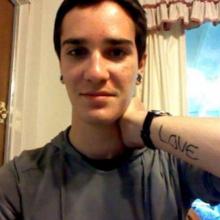religious intolerance

The church before being bulldozed. Image via Sean Hawkey/World Council of Church/Sojourners
A church and mosque in France’s “jungle” camp for migrants and refugees have been destroyed, despite authorities’ reportedly promising not to demolish the places of worship. Bulldozers moved into the camp in Calais, the departure point for ferries to Great Britain, on Feb. 1 and tore down the mosque, which reportedly drew up to 300 worshippers each day, and St. Michael’s Church, a makeshift chapel serving mainly Orthodox Ethiopian Christians.

Street march protesting the killings in Bangladesh. Image via Ashikur Rahman / REUTERS / RNS
Right now, a contentious debate over religious freedom is tearing at the social fabric of a nation, and partisans seeking to take advantage of the uproar are fueling the fires of mistrust and division.
But I’m not talking about the U.S. and arguments over contraceptive mandates and same-sex marriage. (And I’m certainly not talking about red coffee cups!) This struggle for religious freedom is taking place in Bangladesh, and the “debate” is being waged not with words and laws, but with machetes and terror.
In the past eight months, five people have been hacked to death by Islamic extremists associated with terror groups such as Ansar Bangla and al-Qaida. Each victim was targeted for writing or publishing works that advocate for secular democracy and criticize religion and fundamentalism. Many other writers have been injured in these attacks.

Pope Francis leads the Easter vigil mass in Saint Peter's Basilica on Holy Saturday. Vatican City, 19 April 2014. Photo via giulio napolitano / Shutterstock.com
Yes, popes have been visiting the U.S. since Paul VI spent a day in New York in 1965, and each of the following eight papal trips — seven by John Paul II and one by Pope Emeritus Benedict XVI — has been widely anticipated, and enormously successful.
Is it far-fetched to think this could be any different this time — that images of a beaming Roman pontiff taking in the local flavor would not lead to a surge of warm feelings toward a Catholic Church otherwise regarded as beleaguered and out-of-touch?
Yet at a moment of such excitement and goodwill, it is important to remember how unusual this trip is in the context of American history: The idea that a pope could arrive in the United States to fanfare and adulation, especially from leading American politicians, was once unthinkable.
Consider the case of Archbishop Gaetano Bedini, a representative of Pope Pius IX whose 1853 U.S. tour wrought an assassination plot and sparked violence in Cincinnati streets that led to one protester’s death and forced Bedini to flee the country under cover of night. Such extreme reactions grew from Bedini’s close association with his imperious boss, the pope, who denounced democratic government, religious liberty and all of “modern civilization.”
Eric James Borges was teased his entire life for being different. Though he didn’t come out publicly until his sophomore year of college, he recalls emotional and physical abuse as far back as kindergarten for his differences. And though most children undergo some degree of hazing from time to time, the seeming indifference of the adults in his life made matters dramatically worse.
In a video recorded for the “It Gets Better” Project, an LGBT advocacy group focused on offering hope and community to LGBT people on the margins, Borges, 19, recalls being physically assaulted in a full high school classroom while his teacher stood by and watched.
The distressed teen had nowhere to turn at home either. His Christian parents decided to perform a ritual exorcism on him with the hope of “curing” him of his orientation. When that failed, they kicked him out of the house.
Though Borges went on to advocate for LGBT rights through the “It Gets Better” Project and his work with The Trevor Project (a group committed to preventing suicide among LGBT teens), the demons of his past still lingered. Despite finding a community that affirmed and embraced who he was, the damage had already been done.
He killed himself on Jan 11.
